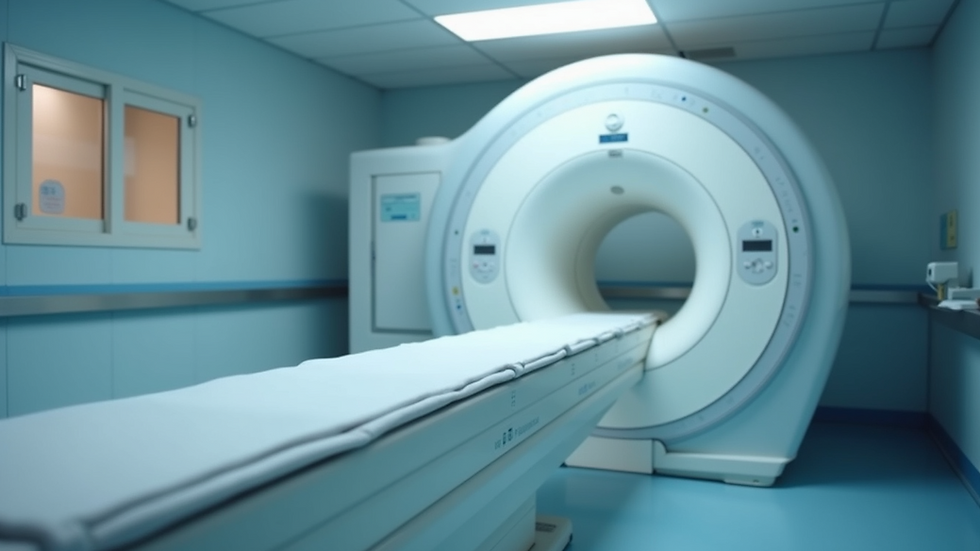Advanced Diagnostic Techniques for Accurate Health Evaluations
- Advance Physiotherapy Chiropractic Clinic
- Aug 1
- 3 min read
In the realm of healthcare, precise diagnosis is the cornerstone of effective treatment. For those seeking physiotherapy and related medical attention, understanding the latest diagnostic methods is crucial. These methods not only help identify the root cause of ailments but also guide personalized treatment plans. This article delves into the latest diagnostic methods, explaining their significance and practical applications in health evaluations.
Understanding the Latest Diagnostic Methods in Healthcare
The healthcare industry has witnessed remarkable advancements in diagnostic technology. These latest diagnostic methods enable practitioners to detect health issues earlier and with greater accuracy. From imaging techniques to laboratory tests, each method plays a vital role in comprehensive health assessments.
Some of the most impactful latest diagnostic methods include:
Magnetic Resonance Imaging (MRI): Provides detailed images of soft tissues, muscles, and joints.
Ultrasound Imaging: Uses sound waves to visualize muscles, tendons, and internal organs.
Digital X-rays: Offers clearer images with reduced radiation exposure.
Blood Tests with Home Collection: Allows patients to conveniently provide samples for detailed analysis.
These methods contribute to faster diagnosis, reducing the time between symptom onset and treatment initiation. For physiotherapy patients, this means tailored interventions that address specific conditions effectively.

What Are Diagnostic Techniques?
Diagnostic techniques encompass a variety of procedures and tools used to identify diseases or injuries. They range from simple physical examinations to complex imaging and laboratory tests. The goal is to gather accurate information about a patient’s health status.
Some common diagnostic techniques include:
Physical Examination: Initial assessment through observation and palpation.
Imaging Tests: Such as X-rays, CT scans, and MRIs to visualize internal structures.
Laboratory Tests: Blood, urine, and other bodily fluid analyses.
Electrodiagnostic Tests: Measuring electrical activity in muscles and nerves.
Each technique provides unique insights. For example, imaging tests reveal structural abnormalities, while blood tests can detect infections or inflammation. Combining these approaches ensures a comprehensive evaluation.

The Role of Advanced Diagnostic Techniques in Physiotherapy
Physiotherapy relies heavily on accurate diagnosis to design effective treatment plans. The integration of advanced diagnostic techniques has revolutionized this process. These techniques help identify the exact nature and extent of musculoskeletal problems.
For instance:
Ultrasound Imaging: Helps visualize soft tissue injuries like tendon tears or muscle strains.
Electromyography (EMG): Assesses nerve and muscle function to detect nerve damage.
Gait Analysis: Uses motion capture technology to evaluate walking patterns and identify biomechanical issues.
By utilizing these tools, physiotherapists can pinpoint problem areas and monitor progress objectively. This leads to more targeted therapies and improved patient outcomes.

Practical Recommendations for Patients Undergoing Diagnostic Evaluations
If you are preparing for diagnostic evaluations, consider the following tips to ensure accurate results and a smooth experience:
Provide Complete Medical History: Share all relevant symptoms and past medical conditions with your healthcare provider.
Follow Pre-Test Instructions: Some tests require fasting or avoiding certain medications.
Wear Comfortable Clothing: This is especially important for imaging tests and physical examinations.
Ask Questions: Understand the purpose of each test and what to expect during the procedure.
Schedule Follow-Up Appointments: Discuss results promptly to plan the next steps in your treatment.
Being proactive and informed helps maximize the benefits of the latest diagnostic methods.
Embracing Technology for Better Health Outcomes
The continuous evolution of diagnostic technology promises even greater accuracy and convenience. Innovations such as portable imaging devices and home-based blood test collections are making healthcare more accessible.
For example, the availability of advanced diagnostic techniques like home blood sample collection allows patients to avoid hospital visits while still receiving comprehensive evaluations. This is particularly beneficial for those with mobility challenges or busy schedules.
Healthcare providers are also leveraging artificial intelligence to interpret diagnostic data faster and more precisely. These advancements contribute to personalized care plans that improve recovery times and overall health.
By staying informed about the latest diagnostic methods and embracing new technologies, patients and healthcare professionals can work together to achieve accurate health evaluations and effective treatments. This approach is essential for anyone seeking physiotherapy or related medical care, ensuring that interventions are based on solid diagnostic foundations.
.png)







Comments